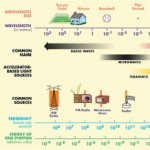- This topic has 4 replies, 3 voices, and was last updated 10 years, 2 months ago by
 MHD NA.
MHD NA.
-
AuthorPosts
-
-
September 8, 2015 at 12:59 pm #24466
 MHD NAParticipant
MHD NAParticipantHi optiwave members;
Is extinction ration the same of Free space range (FSR) in MZM?Regards;
-
September 8, 2015 at 1:56 pm #24480
 Ashu vermaParticipant
Ashu vermaParticipantHi Namera basically
Extintion ratio
In all telecom. systems (for any propagating wave) the extinction ratio is the ratio between “1” and “0” levels (peak and valley). There is the extinction ratio for two polarization components which is defined in the same manner.
In general, this ratio depends on modulation voltage (half-wave voltage) which in its turn depends on the materials you use and your regime parameters.FSR
Free spectral range (FSR) is the spacing in optical frequency or wavelength between two successive reflected or transmitted optical intensity maxima or minima of an interferometer or diffractive optical element -
September 8, 2015 at 2:14 pm #24482
 alistuParticipant
alistuParticipantHi Mohammad,
They are absolutely different from one another. Logical zero is not always an absolute zero, it has some amount. So the ratio of the power of logical one to logical zero is a great amount, but no infinite. It’s a factor in optical sources with two logical levels of power. Free spectral range, whose wikipedia definition is mentioned above and I won’t go through it again, is a parameter in interferometers. These two are quite distinct. If you know a case which might confuse these two, please state.
Regards
-
September 10, 2015 at 12:20 pm #24558
 Ashu vermaParticipant
Ashu vermaParticipantThank you Alistu for making clear statement and mohammed hope our information helps you to understand the difference between two.Best of luck
Regards -
September 10, 2015 at 12:27 pm #24559
 MHD NAParticipant
MHD NAParticipantThank you alistu and Sam, i really had som confusion about FSR and extiction ratio, but now it is clear.
Regards,
-
-
AuthorPosts
- You must be logged in to reply to this topic.

